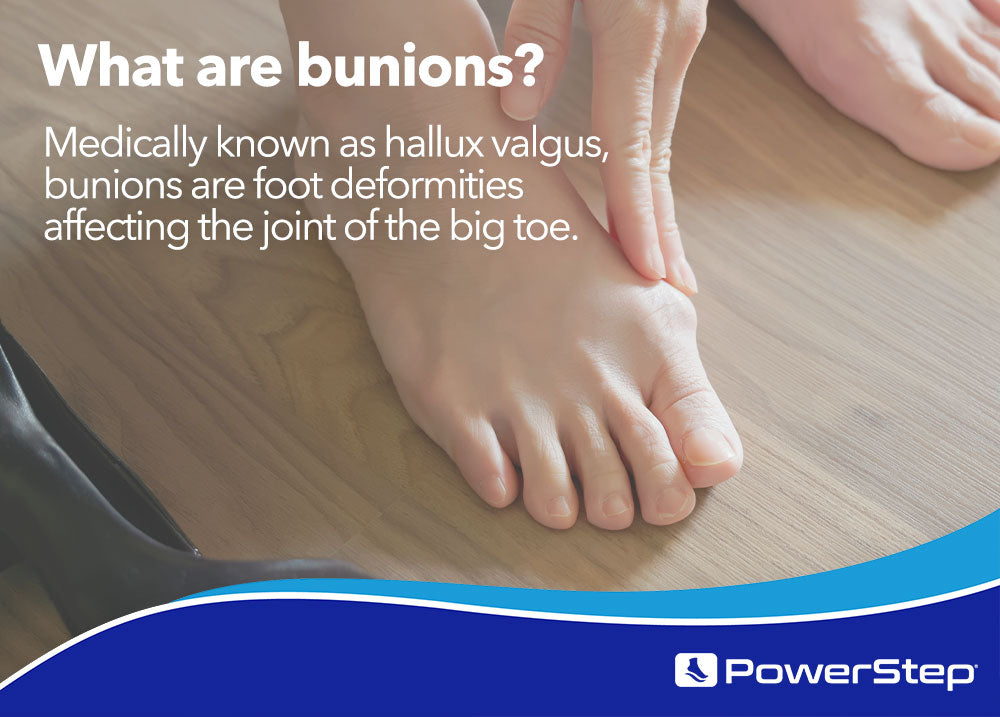What Are Bunions?
Medically known as hallux valgus, bunions are foot deformities affecting the joint of the big toe.


Bunions
If you run your finger along the inside of your foot from your heel to the top of your big toe, you’ll find a curve at the base of that toe. For one third of Americans, that curve is a large, painful bump called a bunion which results from misalignment of that toe joint. There are several ways to prevent and treat bunion pain from wearing better shoes to orthotics that support healthy alignment.

What Are Bunions & What Do They Look Like?
Medically known as hallux valgus, bunions are foot deformities affecting the joint of the big toe. When bones in the front anatomy of the foot move out of place due to consistent pressure or stress, the big toe pulls toward the smaller toes, forcing the joint to bulge out. This creates a bony bump that may appear red and swollen when irritated, making it painful to walk or stand for a long time.
Hallux valgus deformity can occur in one or both feet and is more common in older adults. Still, some people are born with bunions or develop them in their teen years. Bunionettes are similar, smaller deformities that form on the outside of your little toe joint, also called Tailor’s bunions.
Signs & Symptoms of Bunions
Discomfort from bunions progresses over time, as bunions can take years to develop. Without preventative care, the pain will become worse, and the bunion may grow larger.
- Seeing a large, angular bump sticking out at the base of the big toe
- Redness and swelling in the affected area
- Pain at the base of the big toe when walking, standing, or wearing shoes
- Corns or calluses between the first and second toe
- Having difficulty wearing normal shoes
- Development of arthritis in the affected area, leading to chronic pain
In more severe cases, you might experience numbness in your big toe or limited movement and a burning sensation when you try to bend it.
Using Inserts & Orthotics for Bunions
Looking for a supportive shoe insert for bunions? PowerStep® orthotic insoles encourage better alignment to prevent mild to moderate pronation, which is a large contributing factor to bunions. Recommended by podiatrists, PowerStep’s signature arch shape is clinically proven to relieve and prevent foot pain.
Offering the perfect blend of comfort and support, our insoles help stabilize and align the feet while distributing weight evenly across the foot as you walk to reduce stress on your ankles, feet, and joints. Consider the following bunion pain relief solutions by PowerStep:
Shoe Insoles & Cushions
FAQs About Bunions
Treating bunions is a part of practicing good foot health. Have more questions about what causes bunions or how to prevent them? Below are some frequently asked questions about this foot condition:

REFERENCES
- Bunions - Symptoms and causes. (2017). Mayo Clinic.
- Bunions: Causes, Symptoms & Treatment. (2020). Cleveland Clinic.

If you are not satisfied with PowerStep, you can make a return to the point of purchase for a refund or exchange within 60 days of purchase.




